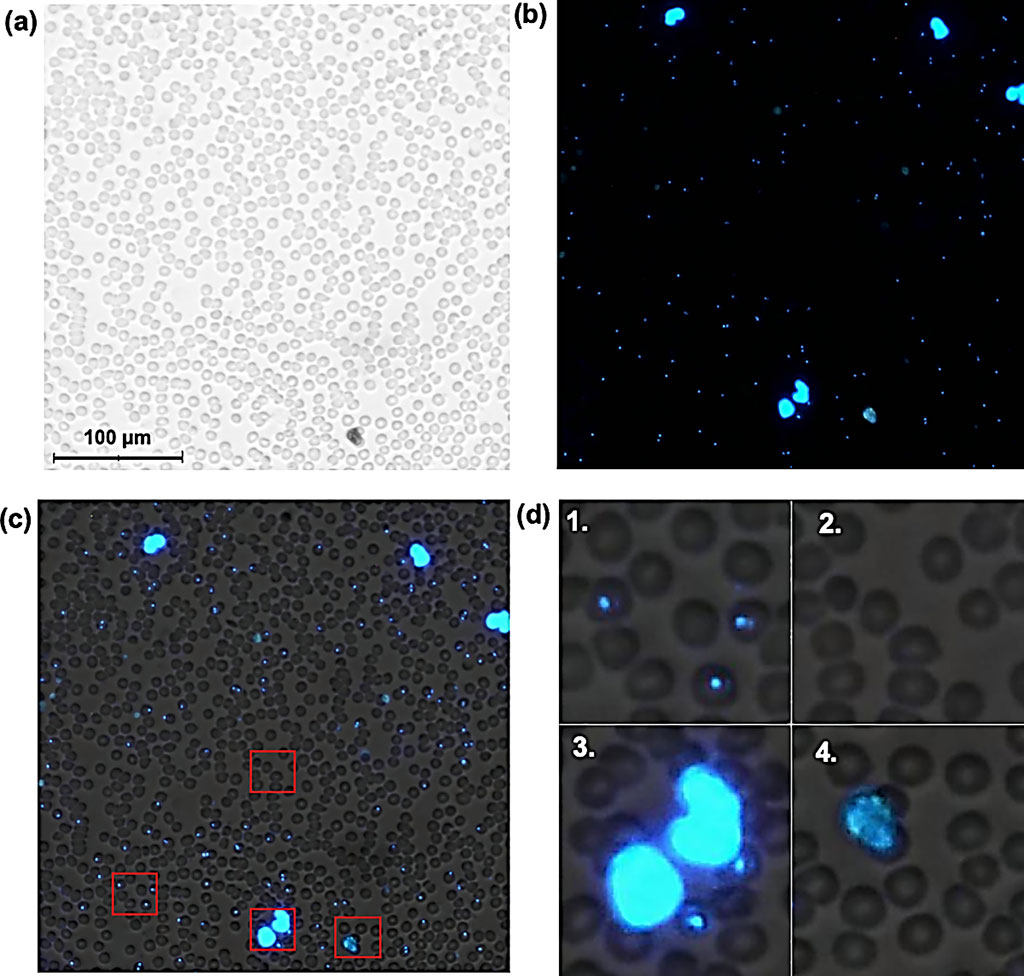Deep Learning Digital Microscope Scanner Detects Malaria
By LabMedica International staff writers
Posted on 09 Dec 2020
Malaria remains a major global health problem with a need for improved field-usable diagnostic tests. Light microscopy assessment of blood smears to detect Plasmodium parasites remains the diagnostic gold standard and allows detection and quantification of Plasmodium species while also being more sensitive than rapid diagnostic tests (RDTs).Posted on 09 Dec 2020
Various staining methods have been proposed for microscopy identification of malaria parasites in blood smears, with Giemsa staining being the standard method. As visual analysis of blood smears is time-consuming and subjective, fluorescent staining methods have been proposed to facilitate the sample analysis process.

Image: Microscopic field of view showing the detection of P. falciparum parasites in DAPI-stained thin smears: (1) infected red blood cells (RBCs), (2) normal RBCs, (3) leukocytes and (4) fluorescent debris (Photo courtesy of University of Helsinki).
A team of medical scientists from the University of Helsinki (Helsinki, Finland) and their colleagues collected 125 thin blood films from patients with microscopy-confirmed P. falciparum infections in rural Tanzania, prior to and after initiation of artemisinin-based combination therapy. The number of asexual parasites and gametocytes was determined by counting the number of visible parasites per 200 white blood cells (WBCs) using a hand tally counter.
The team developed a portable, low-cost digital microscope scanner, capable of both brightfield and fluorescence imaging. They used the instrument to digitize blood smears, and applied deep learning (DL) algorithms to detect P. falciparum parasites. For the digitization of the samples they used a prototype of a portable, digital microscope scanner, developed and patented by the University of Helsinki for point-of-care (POC) scanning of biological samples. The samples were stained using the 4′,6-diamidino-2-phenylindole (DAPI) fluorogen and digitized using the prototype microscope scanner.
The investigators reported that detection of P. falciparum parasites in the digitized thin blood smears was possible both by visual assessment and by DL-based analysis with a strong correlation in results (r = 0.99). A moderately strong correlation was observed between the DL-based thin smear analysis and the visual thick smear-analysis (r = 0.74). Low levels of parasites were detected by DL-based analysis on day three following treatment initiation, but a small number of fluorescent signals were detected also in microscopy-negative samples.
The authors concluded that quantification of P. falciparum parasites in DAPI-stained thin smears is feasible using DL-supported, point-of-care digital microscopy, with a high correlation to visual assessment of samples. Fluorescent signals from artifacts in samples with low infection levels represented the main challenge for the digital analysis, thus highlighting the importance of minimizing sample contaminations. The proposed method could support malaria diagnostics and monitoring of treatment response through automated quantification of parasitaemia and is likely to be applicable also for diagnostics of other Plasmodium species and other infectious diseases. The study was published on November 17, 2020 in the journal PLOS ONE.
Related Links:
University of Helsinki













